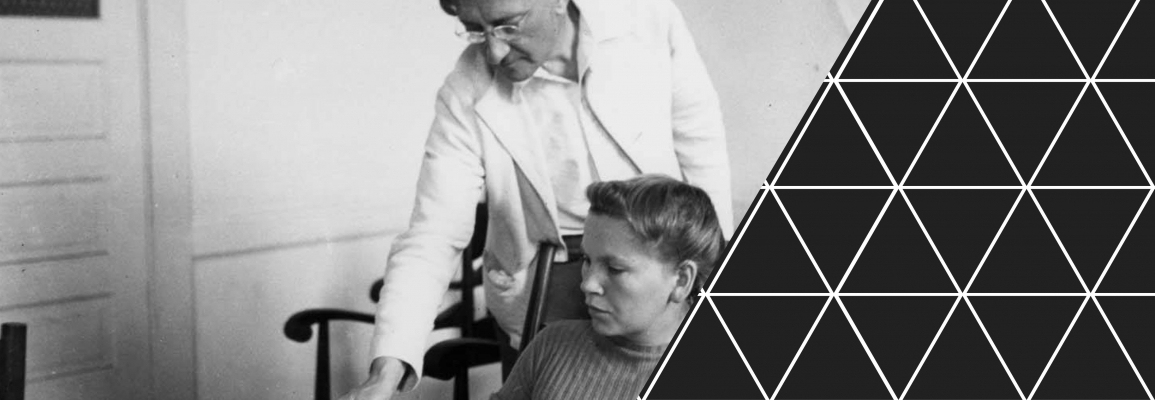Black Mountain College Era 3: 1940-1949
During Albers’ tenure as Rector, a number of signature milestones were achieved. In 1941, the college moved a few miles from the Blue Ridge Assembly to its Lake Eden campus. A farm and work program was initiated in response to the lack of infrastructure and buildings at Lake Eden. As part of the scheme to make tuition affordable and fill campus needs, students were encouraged to commit weekly hours growing cabbage, removing rocks from fields intended for crops, milking cows, and raising barns. Still other students and faculty designed and built the studies building, cafeteria, and student/faculty housing on campus grounds, giving students real world experience in design and fabrication. For example, the Studies Building, designed by A. Lawrence Kocher, was constructed by Black Mountain College faculty and students with minimal professional assistance. The participatory nature of this collaborative process mirrored Black Mountain College’s ideals of experimentation, creative utilitarian design, and sustainability in daily life.Josef Albers is arguably the most consistently influential person in the 24-year history of Black Mountain College. A legendary teacher, Albers is often credited with revolutionizing the art education in America. His famous declaration upon arrival at Black Mountain College was, “To open eyes.” Artists who trained under him at Black Mountain include: Ruth Asawa, Robert Rauschenberg, Susan Weil, Cy Twombly, and Ray Johnson.
Black Mountain’s Summer Institutes were also established under Albers’ leadership. The inaugural 1944 eleven-week summer institute was attended by Alma Stone, a 23-year-old African American musician. Not only was Stone Black Mountain’s first African American student, she is arguably the first African American student to attend an all-white college in the Jim Crow South. None other than Albert Einstein guest lectured in 1945; the experiemental learning environment he visitedno doubt met with Einstein's own educational instincts. Later, during the summer of 1948, the great inventor Buckminster Fuller constructed his first geodesic dome and John Cage and Merce Cunningham, legends of music and dance, respectively, came together.
Through Josef Albers' matière studies, students responded to wartime scarcity in a creative manner, leaving no stone unturned on the Black Mountain College campus. In an effort to deconstruct students' concepts of art and combat a lack of money for expensive art supplies, Albers asked students to gather mundane items on campus grounds, discovering ways in which leaves and paper complemented each other, cracked eggshells from a fallen bird nest could create undulating patterns when cleverly arranged, and discarded newspapers and metal washers could take on new shapes. This assignment sent students zig-zagging across the tree covered campus, combing their mountainous environment for both natural and man-made objects to experiment with, allowing for an intense study of local materials. Taking these banal objects and turning them into unrecognizable combinations taught students to examine materials in novel ways while also endearing them to the Appalachian environment.
Clif Meador explains Josef Albers' influential color theory
Slideshow
This slideshow of primary source material related to Black Mountain College contains letters, exerpts from a John Andrew Rice interview with Martin Duberman, and images of the test farm in the 1940s
